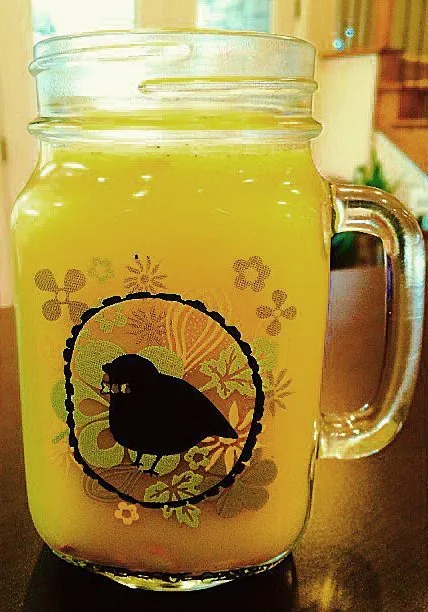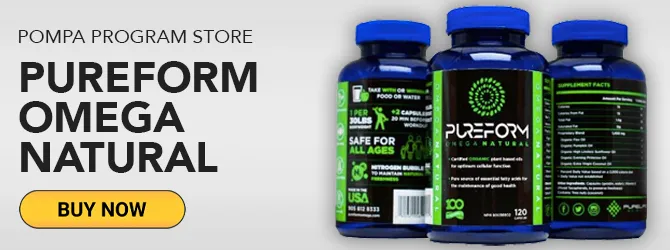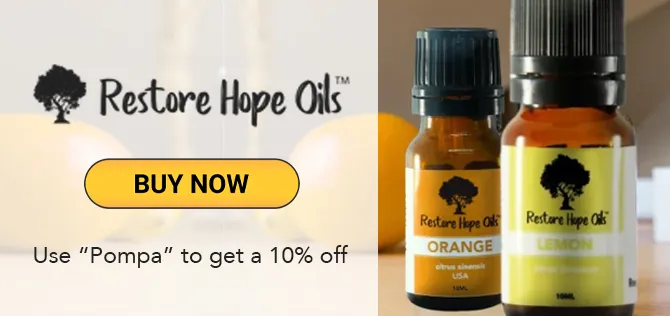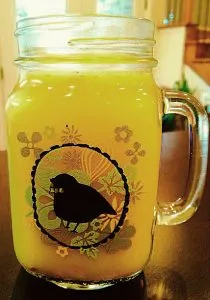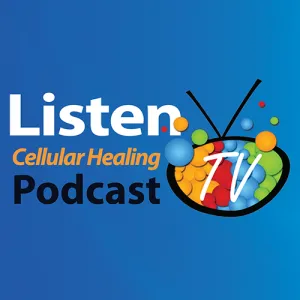Let’s talk about one of my favorite topics: wine. Wine consumption in the United States has increased steadily over the years, from 2.01 gallons per person annually in 2010, to 2.83 gallons in 2015.1 For many, a nice glass of wine is the perfect way to unwind after a long day at the office or complement dinner with family and friends.
>> Interested in Dry Farm Wines? Get a bottle for only one penny! <<
Wine is believed by many to be healthy, which helps fuel its popularity. For example, studies indicate red wine can help reduce the risk of cardiovascular disease.2 While healthy wine is good for us, it’s important to note that all wine is not the same, and some varieties are not as beneficial as we are led to believe.
I recently had an excellent conversation with Todd White. Todd is a wine expert who has fifteen years of experience in the wine business. He is the founder of Dry Farm Wines, and a leading authority on healthy organic natural wines.
Todd understands the love many people have for wine, so he has spent a great deal of time and energy focused on unlocking the best way to enjoy alcohol and avoid the negative outcomes (like hangovers) some may experience.
Todd and I have a lot in common. He follows a ketogenic diet, intermittent fasts on a regular basis, and is a fitness enthusiast. He's also a frequent speaker on ketogenic lifestyle, and is currently completing a keto cookbook.
Personally, I have clients who discovered to their dismay that they couldn’t drink wine anymore, and Todd had the same experience as well; after being on a ketogenic diet for three years he could no longer drink conventional wines. He thought it was due to the higher alcohol content, but quickly discovered it was something else.
After doing research, he made two important discoveries:
- Europe is currently undergoing an extremely popular healthy wine movement.
- There is very little natural wine available in the United States.
As you read this, you may wonder what a “healthy” wine is, and think “aren’t all wines natural?” Unfortunately, they are not.
I asked Todd about this and his response was surprising: “When I discovered natural wine and got rid of all the additives and toxins that are in commercial wines today, in addition to dosing down the alcohol, I discovered that I could drink wines again. This is what many of our customers also discovered.”
Additives and toxins in wine? Yes, it is true. This is very important information because many people drink wine because of the perceived health benefits. As I said before, I've had many clients who are not able to drink wine. They're neurotoxic and sensitive, but they're able to drink Todd’s wines which are different.
There is one important aspect of farming that make wine “natural,” and that is biodynamic farming.
Natural wines are organically or biodynamically farmed. Biodynamic farming is a standard method of organic farming. Thus, it is an advanced form of chemical free farming. All natural wines are chemical free and dry farmed. In other words, they do not use irrigation.
Irrigation has been used for thousands of years with a variety of crops. However, what many don’t know is it does more harm than good with grapevines, since irrigation changes the physiology of the plant and how the fruit ripens. The character of the fruit does not develop properly and phenyl flavors are altered. Irrigated grapes must be picked later in the ripening process causing them to be higher in sugar, and increases wine’s alcohol content and sugar byproducts like glycerol.
Todd further explains how irrigation is detrimental to vines:
“When you irrigate a vine, it gets all of its nutrients and water from the surface from a little drip hose just above the trunk. The root ball of an irrigated vine is about 3 feet in diameter and about 3 feet deep. Where an unirrigated grape vine at maturity will have a root structure that can range 30, 40, 50 feet deep as that vine struggles in search of water and nutrients.
“It's struggling against its neighbor, it's struggling against nature, to feed. This creates a fruit with much higher character, right? This is a reason in most of Europe, almost all of Europe, it's against the law to irrigate a grapevine. In fact, irrigation did not come to the United States until 1973, for grapevines.”
It is obvious that irrigation isn’t good for grapevines. But if the fruit is filled with water it weighs more and when grapes weigh more, they are more profitable. Like other agricultural businesses, the industry has consolidated and the goal is not to make better, healthier wines but to produce them cheaper and faster.
What’s in Your Wine?
Corporate America has shifted the focus from improved food quality to increasing profits. To drive this point home, Todd goes on to say “in the American wine industry, 52% of all the wines made in the United States are made by just three giant companies. Now, you don’t know that, and they don’t want you to know that. It’s a multi-billion dollar operations, so they hide behind thousands of brands and labels to have you believe that you’re drinking from a small farmhouse or somebody’s chateau when in fact you’re drinking from massive factories. Just to take that one step further, 70% of all the wines made in the United States are made by just the top 30 companies, mass consolidation of the industry.
“What happens with mass consolidation is we’re working on spreadsheets. We’re not working on your health, right?”
The bottom line is top priority and it is a global phenomenon.
Moreover, the industry has succumbed to the use of artificial chemicals. The Food & Drug Administration has approved the use of a whopping 76 additives in the wine we drink. Most people think they are drinking is simply fermented grape juice but it’s not. For example, in 2011 the Australian government approved the use of sodium carboxymethyl cellulose in wine. This chemical prevents crystallization and cloudiness in white and sparkling varieties. Also known as cellulose gum, it is also used in laxatives.3 The Australian government notes “Sodium CMC is added to the wine towards the end of the production process . . . (so that) chilling or filtration steps are not required.“4
Of the 76 chemical additives that are approved by the FDA for use in winemaking, 38 of them include the acronym GRAS, which stands for “generally regarded as safe.” This should be surprising, but it should also make you think: If half of these chemicals are regarded as safe, what about the other half? How are they classified?
Here are a few of the additives in wine that are approved by the F.D.A:5
- Aspartame. Aspartame is a sweetening agent and sugar substitute.
- Dimethyl dicarbonate. A microbial control agent used for bottling, canning, or other forms of final packaging
- Mica-based pearlescent pigment. Color additive in liqueurs, flavored alcoholic malt beverages, wine coolers, cocktails, and nonalcoholic cocktail mixers and mixes.
- Mineral oil, white. Used as a float-sealant on fermentation fluids in manufacture of vinegar & wine.
- Petroleum hydrocarbons, odorless, light. Used as a float on fermentation fluids in manufacturing vinegar & wine
- Polyvinylpyrrolidone. Used as a clarifying agent.
- Urease enzyme from Lactobacillius fermentum. Used to inhibit urethane formation.
Ask yourself: if it were just fermented grape juice, why would companies care if there was a contents label? It’s much more than fermented grape juice and that’s what they don’t want you to know.
With so many additives in wine these days, I asked Todd “what exactly is natural wine?” He replied:
“Natural wines contain zero additives. They are also fermented with native yeast indigenous to the vineyard where the grapes are grown. Commercial wines are inoculated with genetically modified commercial yeast.
“The very first thing a winemaker does when a standard wine is made is they use sulfur dioxide to kill the native yeast, so that they don’t ferment. Then they inoculate the juice with a commercial yeast, and we don’t know what the health ramifications of these genetically modified yeasts are.
“We just know that when wines are fermented with native yeasts and are additive free, they don’t contain these problems commonly associated with drinking wines. We’re talking about native yeast, no additives, no adjustments, organic farming, and biodynamic practices. This is what makes up a natural wine.”
Less than 1% of wine made worldwide is naturally made. Producing wine this way began in America, but it has become common around the world. There are a few hundred thousand winemakers worldwide, but less than 500 of them make “healthy” wines. Of those natural wines, the vast majority are made in Europe.
The Quest for Healthy Wine
This information can be quite upsetting for wine drinkers and those trying to live healthier lives in general. We’re told about the amazing health benefits of wine, only to discover that many of the wines we drink are loaded with very ingredients (hidden from the label) we are trying to avoid.
Many of us are concerned about what we eat and drink. We try to eat clean and organic foods, but no one tells us about what we’re drinking. I enjoy having a glass of wine with my meal like many others. It’s time to take the same approach toward wine and alcohol consumption that we take towards food.
Health Benefits of Wine
Wine does offer health benefits, and one that stands out is how it good for our microbiome. Fermented foods were some of the first processed foods consumed by humans. Wine and other foods such as yogurt, cultured milk and beer were popular because when they were fermented they had a higher shelf life.
Eventually, it was discovered that these foods had enhanced nutritional qualities because of the fermentation. These foods contained living microorganisms that were like the strains used in probiotics.
- A study of urine samples was conducted on two groups of volunteers. Over a period of four weeks they drank red wine, grape juice, and a placebo. Researchers claimed the red wine caused a 35% increase in hippuric acid excretion over the grape juice drinkers.7
- In another study, red wine pomace seasonings were used as cancerous cell treatments. The study concluded that colon cancerous cell viability was inhibited by 50%. The results suggest red wine pomace seasonings could be preventive agents in colorectal cancer.8
There are many similar studies indicating how one or two glasses of wine are good for us, but health benefits are mostly lost when 70 additives are thrown in and alcohol content is increased. We think we are helping our bodies when we may be doing the opposite.
The health benefits are mostly from the European wines. Todd estimates that 95% of the healthy wines are made in Europe. Not all the European wines are healthy, but they produce better fruit in Europe because irrigation is illegal in the regions where he gets his wines.
After much research, Todd discovered how difficult it is for consumers to know what is in their wine. Being a person who intermittent fasts and follows a ketogenic diet, he is committed to walking the talk. For this reason, he created Dry Farm Wines.
The Dry Farm Wines Difference
Dry Farm Wines is the largest seller of natural wines in the world. The wines are lab tested to check sugars and alcohol. Todd follows a sugar free diet, and wants to drink a wine that is sugar free as well. I’ve talked about the dangers of sugar and glucose spikes many times, so having a wine that is sugar free is extremely important. Dry Farm Wines are virtually carb free as well because the carbs in wine come from sugar.
Todd goes the extra mile because his wines are screened for mycotoxins like ochratoxin A. Mycotoxins are toxic chemical products produced by fungi that readily colonize crops. Ochratoxin A is one of the most abundant food contaminating mycotoxins. It can be found in contaminated coffee, wine grapes, dried grapes and other food products.
Ochratoxin A is also dangerous. The FDA issued the following statement about Ochratoxin A:
“Studies indicate that this toxin is carcinogenic in mice and rats. It is not completely destroyed during the processing and cooking of food, therefore the implication of risk to human health and safety must be considered. FDA needs up-to- date information on the incidence and levels of occurrence of this toxin in the U.S. for use in considering any necessary regulatory control measures for this substance.”9
While the FDA knows about the dangers of Ochratoxin A, it’s important to remember that wine is regulated by the Alcohol and Tobacco Tax and Trade Bureau (TTB) and they do not require screening for this toxin for wine in the United States.
Todd goes on to say: “All of our wines are tested for ochratoxin A, which is the primary mold found in grape farming. The problem in the United States, there is no screening for ochratoxin A. It is not required by the government. If you’re an American wine producer and you export to Europe and other parts of the world, they actually require that you submit an ochratoxin A report as a part of your export lab reports. Our government doesn’t require that we look at it here, so we’re also screening for molds.”
Healthy Alcohol Levels
Another important aspect of wine is alcohol levels. Alcohol levels have gradually increased in wine over the last several decades. A study conducted by the Center for Wine Economics found that sugar content increased close to 7% over the most recent years and 9% over 28 years.10
Two reasons for the rise are irrigation and how wines have been made. On average, Americans like a bolder tasting wine, but that’s not how real wine tastes. The alcohol gives it the bolder taster, but healthy wine doesn’t have that higher amount of alcohol.
There’s a direct correlation between sugar, irrigation and alcohol: the higher the sugar content caused by irrigation, the higher corresponding alcohol content. American wines (both domestic and commercial) are typically seeing 14½ percent to 16½ percent alcohol stated on the bottle. What people don’t know is what’s stated on the bottle by law is not required to be accurate. If a wine says 14 percent on the label, legally it can be as high as 15½ percent. The wine industry gets up to a point and a half to mislead you about how much alcohol is in it. The reason for the margin is that law was written in the post prohibition era, and the testing methods for alcohol were not as accurate as today.
Remember, alcohol is a toxin. It’s poisonous at the wrong dose. Even water and oxygen can be hazardous to our health at the wrong dose. This is where deceptive labeling comes into play. If a person is out socializing with family or friends, they may not drink just one glass of wine. Instead, they might drink several glasses over the course of an evening. Ideally, we should drink lower alcohol wine because well crafted, healthy wines taste great with food. Drinking wine with 12 percent alcohol or less allows you to drink a bit more while reducing negative effects such as hangovers.
If you’re dehydrated after drinking wine, more than likely it’s because of the higher alcohol content. When I drink Todd’s wines, I don’t feel the effects of dehydration that I do with regular (even organic) wine. There could be other factors, but alcohol content is probably the main cause of the dehydration many people experience. Todd’s wine has lower alcohol content, which reduces the risk of dehydration.
Wine and Sulfites
Sulfites are a hot topic when it comes to wine. Sulfites (or sulfur dioxide) are preservatives used to prevent oxidation and keep wine fresh. Sulfites occur naturally in the fermentation process, and many believe they are the culprit if they feel bad after drinking wine. However, that’s not always the case.
According to Todd, feeling unwell post wine consumption is not always due to sulfites: “White wines are higher in sulfite than red wines. Most people experience wine problems with red wines, although with me it was historically the opposite. I couldn’t drink white wines. The primary problem was the sugar level. If I drink sugar, it gives me a headache. I’m not accustomed to it.
“When wine is sterilized with these doses of sulfur, it removes the soul and the character from that living, beautiful, soulful juice. It just sterilizes it. It makes it shelf consistent. Every bottle tastes the same. That’s not how real wine tastes. Real wine has soul and character, and it’s alive. That’s what real wine tastes like.”
For this reason, Todd limits his wine’s sulfur to 75 parts per million. Many of the wines they offer have 40 or less parts per million (significantly lower than the U.S. limit of 350 parts per million) because they do not add sulfur dioxide.
The average person doesn’t have a sulfite allergy. If he did, he would always carry an EpiPen because sulfites naturally occur in many foods we eat. For example, natural sulfites are found in bottled lemon juice, grape juice, molasses, some dried fruits, sauerkraut, pickled onions and more.
Todd believes the real problem is tyramine and histamine: “Those are exaggerated in commercial winemaking practices because of the way wines are made now, and so you inherently have a higher histamine and tyramine level. This leads to tightness and tension just in the forehead. It leads to, for some people, splotchyness, or redness, or a feeling of warmth that’s unnatural.
“These are these biogenetic amines that are really at work. I don’t have a sensitivity to histamines, but if I drink commercial wines, I can feel it right here in the front (points to middle of forehead)—that’s tyramine and histamine, right, and it gives you that tightness in the head….That’s unnatural. You don’t get that from natural wines.”
Wine, Sugar and Yeast
Yeast has a major role in the wine making process. When grape juice is inoculated with yeast, the yeast eats the sugar. As it eats the sugar, the byproduct is carbon dioxide and ethyl alcohol. Wine becomes sugar free when the winemaker allows the fermentation process to complete and the yeast eats all the sugar. What’s happening in commercial wines is that the winemaker is using sulfur dioxide to kill the yeast prior to its full fermentation. This leaves behind residual sugar, known as RS. Todd tests his wines for RS.
As we know, sugar can cause a spike in glucose and insulin, so it’s important to limit sugar intake. This is especially important for wine drinkers because of the high sugar content in wine.
Another potential concern is the genetically modified yeast that is being used today. Unfortunately, there have been no studies on how these modified versions of yeast affect the body, but Todd does not use them as a precaution.
“I can’t tell you what commercial yeasts are doing…. Here’s what we do know, when we remove the additives and we use a native yeast that’s indigenous—it’s on the skin of every grape. When we allow wine to make itself naturally, we don’t have any of these issues. I’d love to be able to give you some science studies on the effects of commercial yeast. They just don’t exist.”
Ketosis, Fasting, and the Magic of Variation
Todd has been following the ketogenic diet for several years. As a result, he understands the frustrations of trying to avoid many of the toxins we are bombarded with today. This has helped him provide healthy wines for those who wish to partake and not worry if it is detrimental to their health.
“I had been experimenting with low-carb diets over the years, but I had decided to experiment about three years ago with ketosis to breakthrough a weight loss plateau. I thought I had just five more pounds I just personally wanted to lose that I couldn’t seem to shake. In fact, after I became ketogenic, I lost almost an additional 20 pounds over the ensuing years that I really had no idea that I needed to lose.”
What makes Todd and his company even more amazing is his entire staff is on the same page. They believe in the power of the ketogenic diet and it shows in their passion for providing such an excellent product:
“The reason that I’m a proponent and an evangelist for the ketogenic diet today is really its effect on the reduction of inflammation, so you can even look in the face of someone who’s ketogenic, or I have—everybody on my staff is ketogenic. It’s not a requirement of working here. It just happens to be who we are, and most of the folks who work for me are younger and happen to be quite thin. Even when they became ketogenic, they didn’t experience much weight loss, but what you could really see is a restructuring in their face. This tremendous melting away of puffiness that’s even apparent—you don’t even realize it’s there, particularly people who are thin by nature. You don’t really see them as inflamed. In fact, when they become ketogenic, you see this melting away, and you’ll see a more defined facial structure, right? That’s inflammation. That was an amazing result.”
Todd is also a big proponent of fasting as well. For two years he fasted for 16-18 hours per day, while eating twice in a 6 hour window. For the last 6 months, he has adapted a single “feeding” per day doing a 22 to 24 hours fast daily.
“Once I went to a one meal a day program, I got new power, best at the gym. I got boom. It’s like I had my personal best on both high-intensity training as well as resistance training for weightlifting. My personal best after I went to one meal a day. I thought I might experience just the opposite. I thought I might experience some lean body loss or a loss of power in not having that fuel. In fact, just the opposite happened, and I work out in the mornings in a fasted state.”
As many of you know, what also works for me is to practice “Diet Variation.” I will eat 1 meal a day, fasting for twenty four hours, 1-2 days a week. I eat dinner and won’t again until dinner the next evening. Then one day a week I will purposely eat more, may “feast” carb-load day. It reminds my body it is not starving—very important! The other days of the week I mostly follow a keto diet with intermittent fasting. I call this my 5-1-1 Rule, read on it more here.
Why is diet variation important? We know that the body will hang onto fat because it becomes a precious commodity in times of famine (mimicked by fasting). The feast and famine day(s) act to imitate our ancestors’ lifestyle and can help a person become more anabolic and lean. The key is to NOT eat less, but eat less often. The magic is in the variation.
For those interested in fasting, Todd and I both agree they should ease into it. Fasting can be an adjustment both mentally and physically. When starting to fast, it’s important to be mindful of what you’re doing. Many think they are fasting, but they don’t count the handful of nuts or the scoop of coconut oil they have every couple hours. Give your body a real break from eating. Fast and truly enjoy your food when you do eat. Todd drink his wine with dinner every night, but avoids drinking without eating because food aids alcohol absorption.
Todd fully stands behind his natural wines. He believes they are the healthiest wines on the market and are the great addition to meals. Give Todd’s healthy wine a try today and let us know what you think!
Special offer for our readers:
Go to Dry Farm Wines, get a bottle of Dry Farm Wines for one penny!
Questions for Todd? He can be reached at Todd@dryfarmwines.com.
- CHTV Episode 146: Can You Drink Wine and Stay in Ketosis?
- The Ketogenic Diet: An Answer for More Than Weight Loss Resistance
- Intermittent Fasting – A Top 5 Strategy to Create Your Best Health Ever
- Burst Training – A Top 5 Strategy to Create Your Best Health Ever
- PompaCore Cellular Detox™ – A Top 5 Strategy to Create Your Best Health Ever
- Your Brain on Diet Soda: Aspartame Effects on the Brain
- It's Not Just Gluten – The Glyphosate Threat
- Diet Variation Strategies, The Quickest Ways to Lose Weight
- “The Wine Institute.” Wine Consumption in the U.S. – The Wine Institute. July 7, 2016. http://www.wineinstitute.org/resources/statistics/article86.
- Saleem, T.S. Mohamed, and S. Darbar Basha. “Red wine: A drink to your heart.” Journal of Cardiovascular Disease Research. October-December 2010. https://www.ncbi.nlm.nih.gov/pmc/articles/PMC3023893/.
- APPLICATION A1047 SODIUM CARBOXYMETHYLCELLULOSE AS A FOOD ADDITIVE IN WINE RISK AND TECHNICAL ASSESSMENT REPORT. PDF. Food Standards Australia – New Zealand.
- Burke, Jessica . “Laxative chemical permitted for use in Australian wines.” Food Beverage. November 28, 2011. https://foodmag.com.au/laxative-chemical-permitted-for-use-in-australian-wines/.
- Center for Food Safety and Applied Nutrition. “Food Additives & Ingredients – Food Additive Status List.” U S Food and Drug Administration Home Page. December 16, 2014. http://www.fda.gov/Food/IngredientsPackagingLabeling/FoodAdditivesIngredients/ucm091048.htm.
- What the Wine Label Tells You. PDF . TTB – Alcohol and Tobacco Tax and Trade Bureau.
- Van, F. A., C. H. Grün, E. J. Van, D. M. Jacobs, R. Draijer, and J. P. Van. “The metabolic fate of red wine and grape juice polyphenols in humans assessed by metabolomics.” Molecular nutrition & food research. July 2010. https://www.ncbi.nlm.nih.gov/pubmed/20013882.
- Del, R., M. D. Rivero-Pérez, M. L. González-SanJosé, M. Ortega-Heras, J. García, and P. Muñiz. “Chemopreventive Potential of Powdered Red Wine Pomace Seasonings against Colorectal Cancer in HT-29 Cells.” Journal of agricultural and food chemistry. January 11, 2017. https://www.ncbi.nlm.nih.gov/pubmed/27957845.
- FOOD AND DRUG ADMINISTRATION COMPLIANCE PROGRAM GUIDANCE MANUAL. PDF. FOOD AND DRUG ADMINISTRATION.
- Too Much of a Good Thing? Causes and Consequences of Increases in Sugar Content of California Wine Grapes. PDF. Robert Mondavi Institute Center for Wine Economics.


